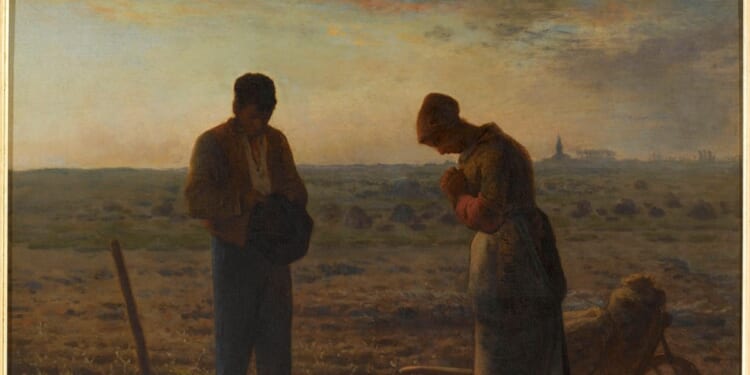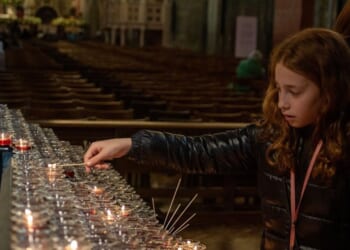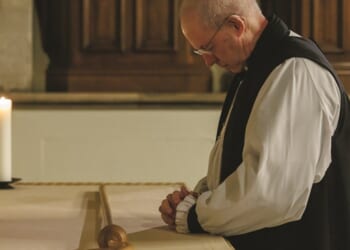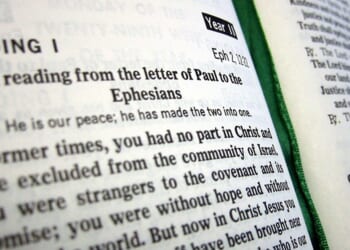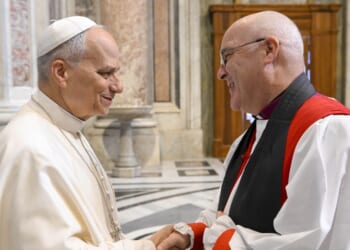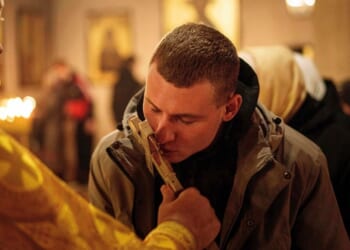THE ANGELUS, by Jean-François Millet, is both one of the most famous paintings in France and a painting that is known throughout the world, while also being revered by artists such as Vincent Van Gogh and Salvador Dalí. In a letter, Van Gogh wrote of the painting “‘that’s it.’ That’s rich, that’s poetry.” Dalí said that the painting was “the most enigmatic, the most dense, the richest in unconscious thoughts that had ever existed”.
Originally sold for the relatively low price of 1000 francs in 1859, within 30 years it was subject to a bidding war between French and American bidders. A result of that auction was that the painting left French shores for a time, a disappointing outcome (later rectified by its donation to The Louvre) that ultimately led both to the formation of a fund to acquire works of art to enrich the national collections of France and a system of royalties payable to artists on subsequent resale of works that they had created.
Philip McCouat concludes that it is probable that no other painting has had such an impact: not only revered by the general public and a significant influence on artists, but also opening up new ways of rewarding artists and purchasing their works.
This influential work, normally in the Musée d’Orsay, can be seen in London for the duration of “Millet: Life on the Land”, the latest in the National Gallery’s brilliant series of small, focused, and dossier-style exhibitions.
It seeks to show how Millet portrayed figures of rural workers with great nobility and grandeur, conferring on them a status usually reserved for figures from history. To do so, the exhibition ranges from the late 1840s, Millet’s last years in Paris, through to his images of workers on the land during the 1850s after his move to the village of Barbizon, in the Fontainebleau Forest, in 1849. There, he became one of the most significant painters associated with the 19th-century Barbizon school. The exhibition enables us to see his exceptional technique, particularly as a prolific and accomplished draughtsman.
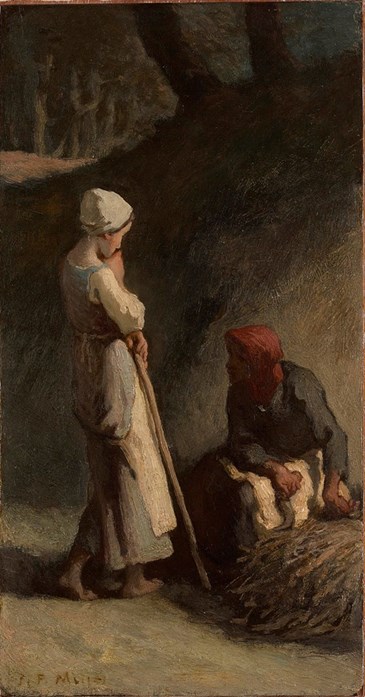 © Amgueddfa Cymru — National Museum WalesThe Faggot Gatherers (1868-75) by Jean-François Millet
© Amgueddfa Cymru — National Museum WalesThe Faggot Gatherers (1868-75) by Jean-François Millet
The Angelus shows a man and a woman reciting the prayer that commemorates the annunciation and is traditionally cited at morning, noon, and evening. Two figures standing quietly in prayer are silhouetted against land and sky in a painting that exudes a profound sense of meditation and introspection, underscored by a beauty of light.
Millet’s work has been subject to significant criticism as well as praise, and The Angelus has been a lodestone for both. On the one hand, Millet, it has been argued, was sentimental about the rural workers whom he depicted, showing them in melodramatic and pietistic poses. On the other, he was clearly a pioneer in shifting the focus of art towards the lives and experiences of working people, and sought to portray them realistically and with dignity.
Sarah Herring, associate curator of post-1800 paintings at the National Gallery, comes down on the side of those who view Millet as having “endowed rural labourers with dignity and nobility, depicting them in drawings and paintings with empathy and compassion”. The exhibition sets The Angelus in the context of a range of other work — drawing and paintings — in which the emphasis is on the demanding and tiring nature of the work undertaken by rural workers and the sense of exhaustion and fatigue experienced as a result. This is exceptionally well conveyed both by Millet in his works and by the works selected for display.
His Study for “Shepherdess at Rest” and The Goose Girl at Gruchy show young girls exhausted from travel or work. The Faggot Gatherers shows the staggering scale of the loads of branches carried to sell for firewood, which, as Herring notes, threaten to overwhelm the women, generally older, in their stumble homewards. Millet, in a letter from 1851, describes how seeing “a poor figure laden with a faggot” reminded him of the constant fatigue of people’s lives.
The Angelus, by marking the end of the working day with a moment of stillness and contemplation, fits within this context of the relentless rigour of rural life and the value to its people of even short or snatched moments of rest.
Millet recalled that the idea for The Angelus came “because I remembered that my grandmother, hearing the church bell ringing while we were waiting in the fields, always made us stop work to say the Angelus prayer for the poor dead, very piously and hat in hand”.
Simon Kelly notes in the catalogue that “Millet’s interest in religion has been marginalised in modernist readings of his avant-garde practice.” Though Millet was not a churchgoer in later life, Kelly writes that, when asked if he still read the Bible and the Psalms, Millet responded: “They are my breviary. . . It is there I find all that I paint.” The bias to the poor, which is found in the counter-testimony of the Old Testament, is the beating heart of Millet’s work.
“Millet: Life on the Land” is at the National Gallery, Trafalgar Square, London WC2, until 19 October. Phone 020 7747 2885. www.nationalgallery.org.uk

